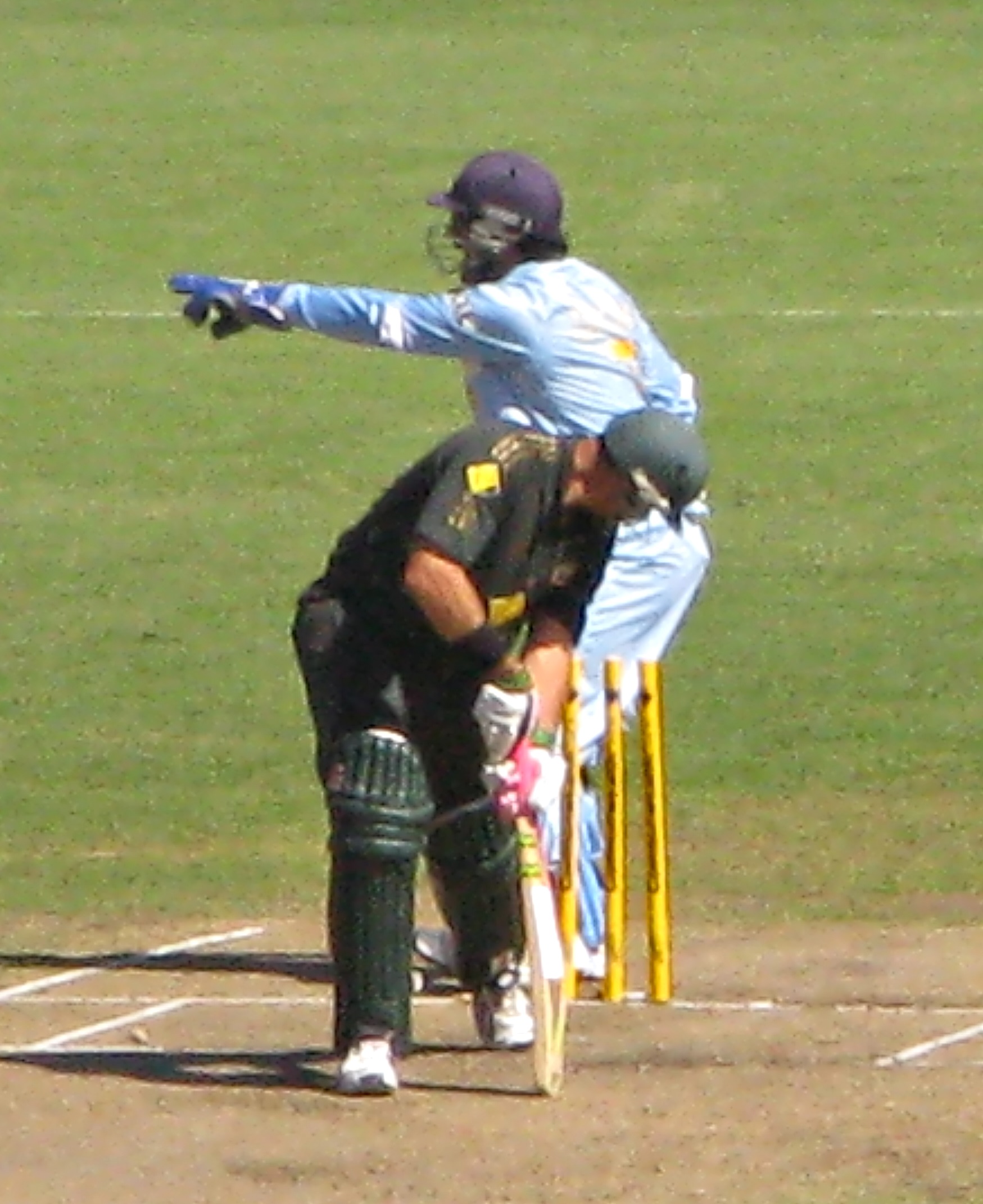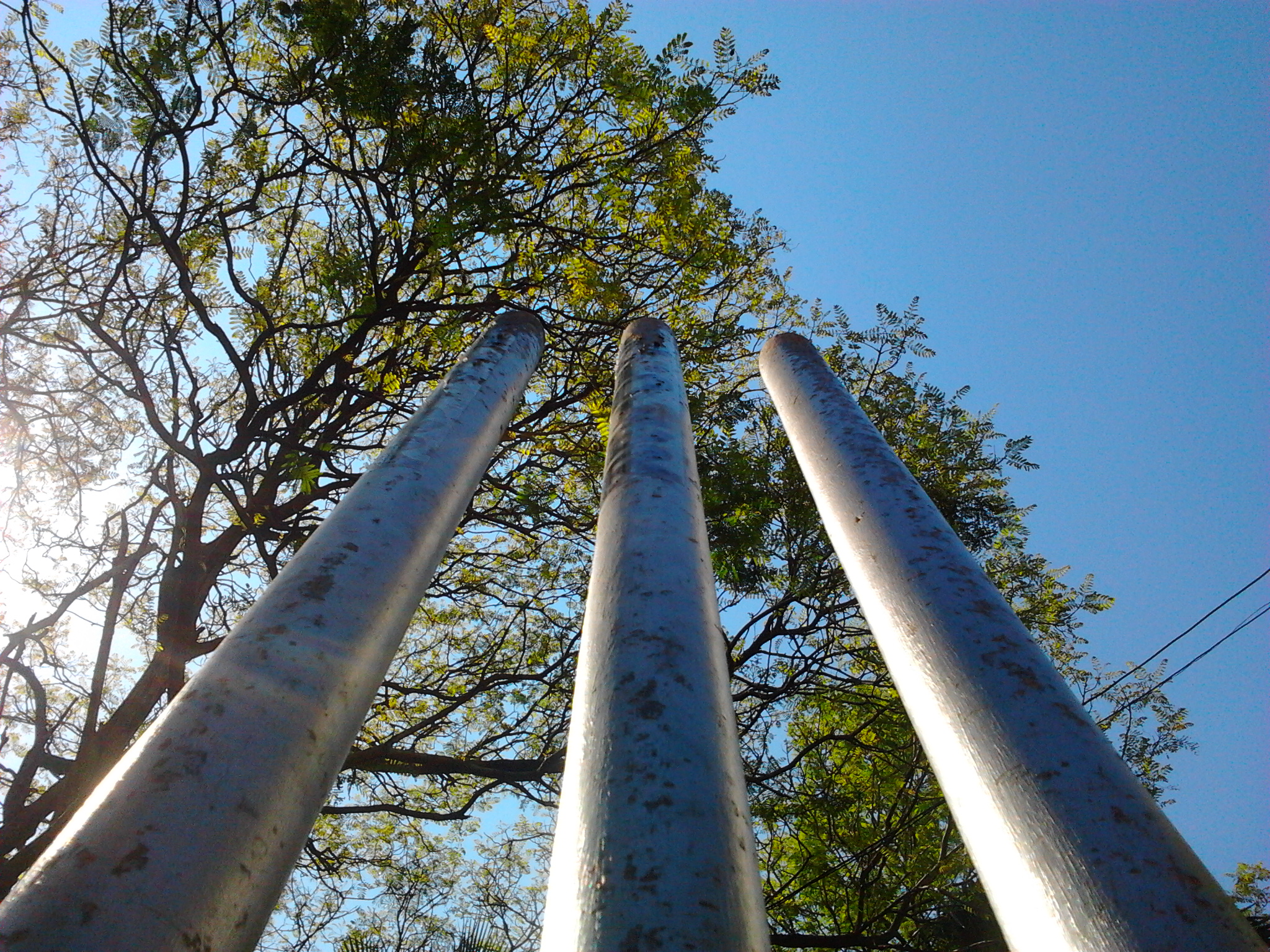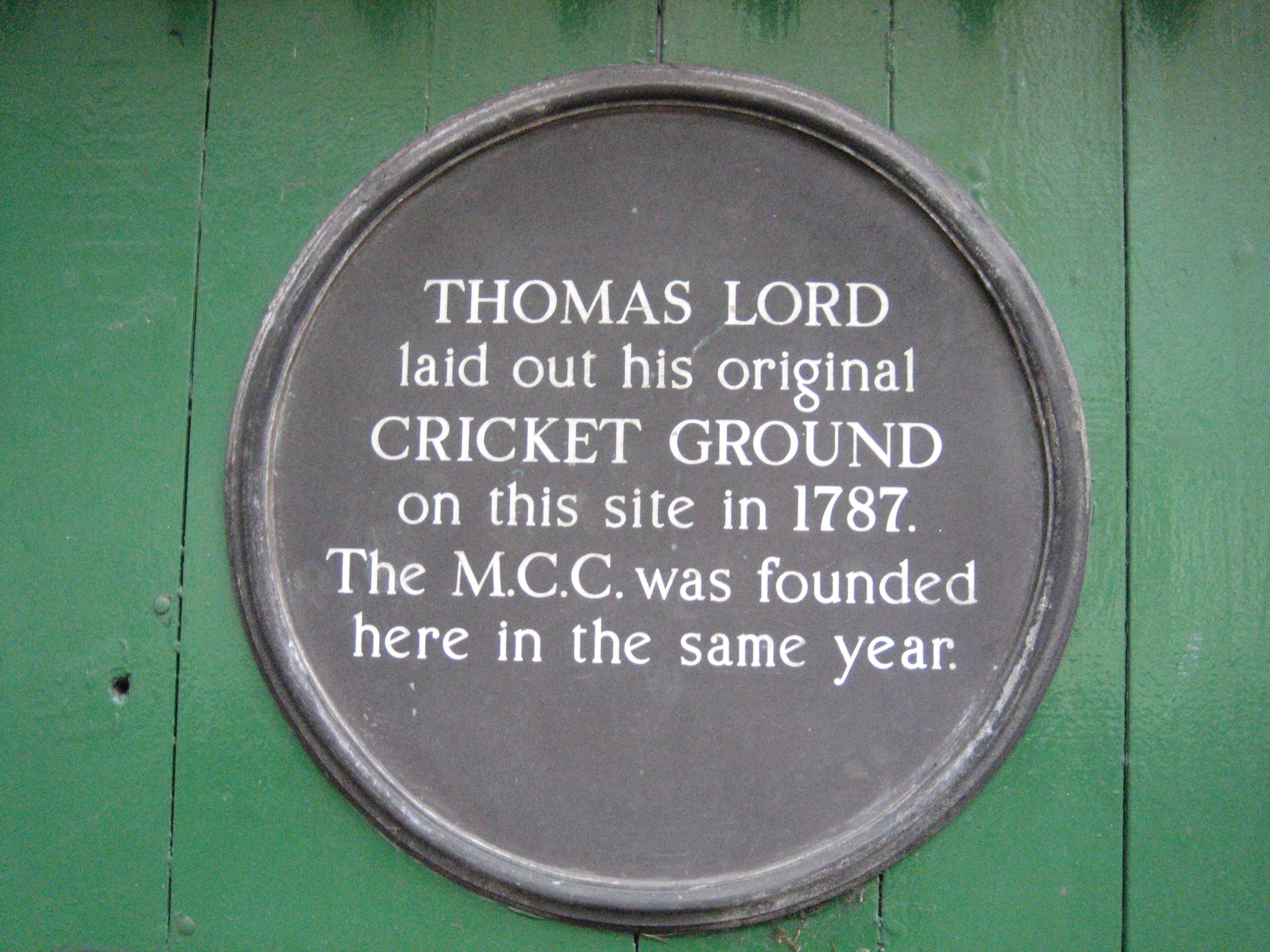|
James Davis (Surrey Cricketer)
James Davis (dates of birth and death unknown) was an English cricketer. Davis' batting style is unknown, though it is known he played as a wicket-keeper. Davis made his first-class debut for England against Sussex in 1843 at the Royal New Ground, Brighton. He next appeared in first-class cricket in 1848 for the Surrey Club against the Marylebone Cricket Club at Lord's, before making two further first-class appearances for Surrey, both against Middlesex in 1850. He batted six times in his four matches, scoring just a single run and being dismissed for a duck four times. Behind the stumps he made a single catch and stumping Stumped is a method of dismissing a batsman in cricket, which involves the wicket-keeper putting down the wicket while the batsman is out of his ground. (The batsman leaves his ground when he has moved down the pitch beyond the popping crease .... References External linksJames Davisat ESPNcricinfoJames Davisat CricketArchive {{DEFAULTSORT ... [...More Info...] [...Related Items...] OR: [Wikipedia] [Google] [Baidu] |
Wicket-keeper
The wicket-keeper in the sport of cricket is the player on the fielding side who stands behind the wicket or stumps being watchful of the batsman and ready to take a catch, stump the batsman out and run out a batsman when occasion arises. The wicket-keeper is the only member of the fielding side permitted to wear gloves and external leg guards. The role of the keeper is governed by Law 27 of the Laws of Cricket. Stance Initially, during the bowling of the ball the wicket-keeper crouches in a full squatting position but partly stands up as the ball is received. Australian wicket-keeper Sammy Carter (1878 to 1948) was the first to squat on his haunches rather than bend over from the waist (stooping). Purposes The keeper's major function is to stop deliveries that pass the batsman (in order to prevent runs being scored as 'byes'), but he can also attempt to dismiss the batsman in various ways: * The most common dismissal effected by the keeper is for him to '' catch'' a ... [...More Info...] [...Related Items...] OR: [Wikipedia] [Google] [Baidu] |
Lord's
Lord's Cricket Ground, commonly known as Lord's, is a cricket venue in St John's Wood, London. Named after its founder, Thomas Lord, it is owned by Marylebone Cricket Club (MCC) and is the home of Middlesex County Cricket Club, the England and Wales Cricket Board (ECB), the European Cricket Council (ECC) and, until August 2005, the International Cricket Council (ICC). Lord's is widely referred to as the ''Home of Cricket'' and is home to the world's oldest sporting museum. Lord's today is not on its original site; it is the third of three grounds that Lord established between 1787 and 1814. His first ground, now referred to as Lord's Old Ground, was where Dorset Square now stands. His second ground, Lord's Middle Ground, was used from 1811 to 1813 before being abandoned to make way for the construction through its outfield of the Regent's Canal. The present Lord's ground is about north-west of the site of the Middle Ground. The ground can hold 31,100 spectators, the capacity ... [...More Info...] [...Related Items...] OR: [Wikipedia] [Google] [Baidu] |
Surrey Cricketers
Surrey () is a ceremonial and non-metropolitan county in South East England, bordering Greater London to the south west. Surrey has a large rural area, and several significant urban areas which form part of the Greater London Built-up Area. With a population of approximately 1.2 million people, Surrey is the 12th-most populous county in England. The most populated town in Surrey is Woking, followed by Guildford. The county is divided into eleven districts with borough status. Between 1893 and 2020, Surrey County Council was headquartered at County Hall, Kingston-upon-Thames (now part of Greater London) but is now based at Woodhatch Place, Reigate. In the 20th century several alterations were made to Surrey's borders, with territory ceded to Greater London upon its creation and some gained from the abolition of Middlesex. Surrey is bordered by Greater London to the north east, Kent to the east, Berkshire to the north west, West Sussex to the south, East Sussex to the sou ... [...More Info...] [...Related Items...] OR: [Wikipedia] [Google] [Baidu] |
Surrey Club Cricketers
Surrey () is a ceremonial and non-metropolitan county in South East England, bordering Greater London to the south west. Surrey has a large rural area, and several significant urban areas which form part of the Greater London Built-up Area. With a population of approximately 1.2 million people, Surrey is the 12th-most populous county in England. The most populated town in Surrey is Woking, followed by Guildford. The county is divided into eleven districts with borough status. Between 1893 and 2020, Surrey County Council was headquartered at County Hall, Kingston-upon-Thames (now part of Greater London) but is now based at Woodhatch Place, Reigate. In the 20th century several alterations were made to Surrey's borders, with territory ceded to Greater London upon its creation and some gained from the abolition of Middlesex. Surrey is bordered by Greater London to the north east, Kent to the east, Berkshire to the north west, West Sussex to the south, East Sussex to ... [...More Info...] [...Related Items...] OR: [Wikipedia] [Google] [Baidu] |
English Cricketers
English usually refers to: * English language * English people English may also refer to: Peoples, culture, and language * ''English'', an adjective for something of, from, or related to England ** English national identity, an identity and common culture ** English language in England, a variant of the English language spoken in England * English languages (other) * English studies, the study of English language and literature * ''English'', an Amish term for non-Amish, regardless of ethnicity Individuals * English (surname), a list of notable people with the surname ''English'' * People with the given name ** English McConnell (1882–1928), Irish footballer ** English Fisher (1928–2011), American boxing coach ** English Gardner (b. 1992), American track and field sprinter Places United States * English, Indiana, a town * English, Kentucky, an unincorporated community * English, Brazoria County, Texas, an unincorporated community * Engl ... [...More Info...] [...Related Items...] OR: [Wikipedia] [Google] [Baidu] |
ESPNcricinfo
ESPN cricinfo (formerly known as Cricinfo or CricInfo) is a sports news website exclusively for the game of cricket. The site features news, articles, live coverage of cricket matches (including liveblogs and scorecards), and ''StatsGuru'', a database of historical matches and players from the 18th century to the present. , Sambit Bal was the editor. The site, originally conceived in a pre-World Wide Web form in 1993 by Simon King, was acquired in 2002 by the Wisden Grouppublishers of several notable cricket magazines and the Wisden Cricketers' Almanack. As part of an eventual breakup of the Wisden Group, it was sold to ESPN, jointly owned by The Walt Disney Company and Hearst Corporation, in 2007. History CricInfo was launched on 15 March 1993 by Simon King, a British researcher at the University of Minnesota. It grew with help from students and researchers at universities around the world. Contrary to some reports, Badri Seshadri, who was very instrumental in CricInfo' ... [...More Info...] [...Related Items...] OR: [Wikipedia] [Google] [Baidu] |
Stumping
Stumped is a method of dismissing a batsman in cricket, which involves the wicket-keeper putting down the wicket while the batsman is out of his ground. (The batsman leaves his ground when he has moved down the pitch beyond the popping crease, usually in an attempt to hit the ball). The action of stumping can only be performed by a wicket-keeper, and can only occur from a legitimate delivery (i.e. not a no-ball), while the batsman is not attempting a run; it is a special case of a run out. Being "out of his ground" is defined as not having any part of the batsman's body or his bat touching the ground behind the crease – i.e., if his bat is slightly elevated from the floor despite being behind the crease, or if his foot is on the crease line itself but not completely across it and touching the ground behind it, then he would be considered out (if stumped). One of the fielding team (such as the wicket-keeper himself) must appeal for the wicket by asking the umpire. The appeal ... [...More Info...] [...Related Items...] OR: [Wikipedia] [Google] [Baidu] |
Catch (cricket)
Caught is a method of dismissing a batsman in cricket. A batsman is out caught if the batsman hits the ball, from a legitimate delivery, with the bat, and the ball is caught by the bowler or a fielder before it hits the ground. If the ball hits the stumps after hitting the wicket-keeper, If the wicket-keeper fails to do this, the delivery is a "no ball", and the batsman cannot be stumped (nor run out, unless he attempts to run to the other wicket.) If the catch taken by the wicket-keeper,then informally it is known as caught behind or caught at the wicket. A catch by the bowler is known as caught and bowled. This has nothing to do with the dismissal bowled but is rather a shorthand for saying the catcher and bowler are the same player. (The scorecard annotation is usually ''c. and b.'' or ''c&b'' followed by the bowler's name.) Caught is the most common method of dismissal at higher levels of competition, accounting for 36,190 Test match dismissals between 1877 and 2012, wh ... [...More Info...] [...Related Items...] OR: [Wikipedia] [Google] [Baidu] |
Stumps
In cricket, the stumps are the three vertical posts that support the bails and form the wicket. '' Stumping'' or ''being stumped'' is a method of dismissing a batsman. The umpire ''calling stumps'' means the play is over for the day. Part of the wicket The stumps are three vertical posts which support two bails. The stumps and bails are usually made of wood, most commonly ash, and together form a wicket at each end of the pitch. The overall width of each wicket is 9 inches (22.9 cm). Each stump is 28 inches (71.1 cm) tall with maximum and minimum diameters of 1 inches (3.81 cm) and 1 inches (3.49 cm). They have a spike at one end for inserting into the ground, and the other end has a U-shaped 'through groove' to provide a resting place for the bails. In junior cricket the items have lesser dimensions. Each stump is referred to by a specific name: * Off stump is the stump on the off side of the wicket (the same side as the batsman's bat). * Mid ... [...More Info...] [...Related Items...] OR: [Wikipedia] [Google] [Baidu] |
Duck (cricket)
In cricket, a duck is a batsman's dismissal with a score of zero. A batsman being dismissed off their first delivery faced is known as a golden duck. Etymology The term is a shortening of the term "duck's egg", the latter being used long before Test cricket began. When referring to the Prince of Wales' (the future Edward VII) score of nought on 17 July 1866, a contemporary newspaper wrote that the Prince "retired to the royal pavilion on a 'duck's egg' ".LONDON from THE DAILY TIMES CORRESPONDENT, 25 July 1866 can be viewed aPaper's past/ref> The name is believed to come from the shape of the number "0" being similar to that of a duck's egg, as in the case of the American slang term "goose-egg" popular in baseball and the tennis term "love", derived – according to one theory – from French ''l'œuf'' ("the egg"). The Concise Oxford Dictionary still cites "duck's egg" as an alternative version of the term. Significant ducks The first duck in a Test match was made in the fi ... [...More Info...] [...Related Items...] OR: [Wikipedia] [Google] [Baidu] |
Middlesex County Cricket Teams
County cricket teams representing Middlesex have been traced back to the 18th century, although for long periods the county was secondary to the London Cricket Club which played at the Artillery Ground. Middlesex teams played at various grounds throughout what is now the Greater London area. Islington and Uxbridge were often used but home matches were also played on Kennington Common and in Berkshire. Middlesex teams were less frequent in the 19th century until 1859 when the Walker family of Southgate became involved in county cricket. Until 1863, teams were formed ''ad hoc'' by various patrons and clubs, often on an informal basis. Depending on the strength of the opposition, teams called Middlesex have generally been recognised as top-class. Middlesex County Cricket Club was founded in December 1863 and its team has been recognised as the county's representative in first-class cricket from the 1864 season. 17th century As elsewhere in south east England, cricket became establ ... [...More Info...] [...Related Items...] OR: [Wikipedia] [Google] [Baidu] |
Marylebone Cricket Club
Marylebone Cricket Club (MCC) is a cricket club founded in 1787 and based since 1814 at Lord's Cricket Ground, which it owns, in St John's Wood, London. The club was formerly the governing body of cricket retaining considerable global influence. In 1788, the MCC took responsibility for the laws of cricket, issuing a revised version that year. Changes to these Laws are now determined by the International Cricket Council (ICC), but the copyright is still owned by MCC. When the ICC was established in 1909, it was administered by the secretary of the MCC, and the president of MCC automatically assumed the chairmanship of ICC until 1989. For much of the 20th century, commencing with the 1903–04 tour of Australia and ending with the 1976–77 tour of India, MCC organised international tours on behalf of the England cricket team for playing Test matches. On these tours, the England team played under the auspices of MCC in non-international matches. In 1993, its administrative an ... [...More Info...] [...Related Items...] OR: [Wikipedia] [Google] [Baidu] |





